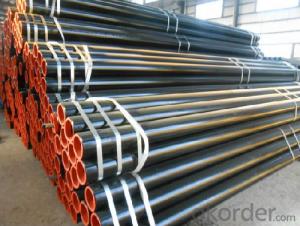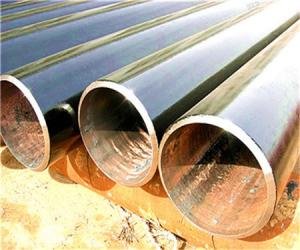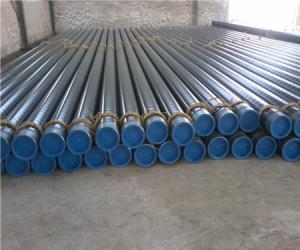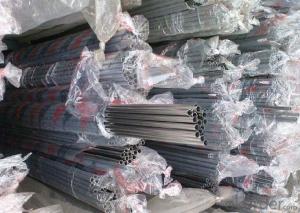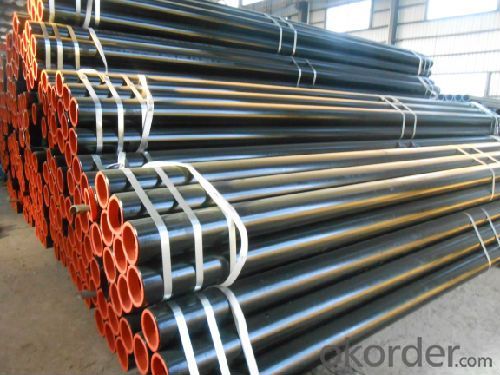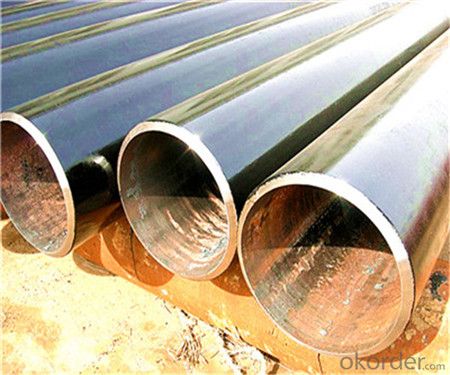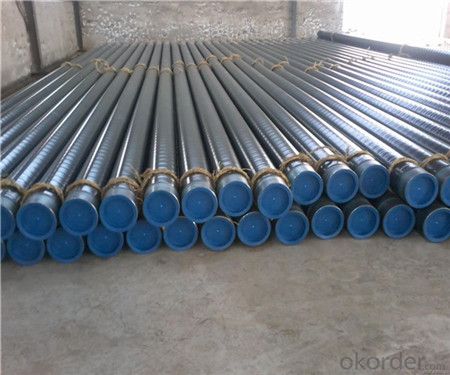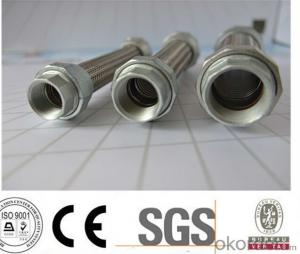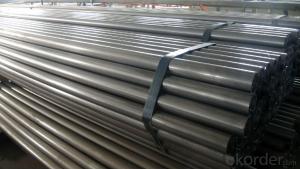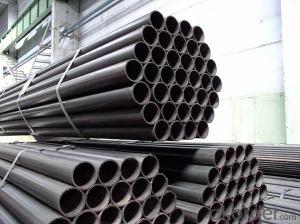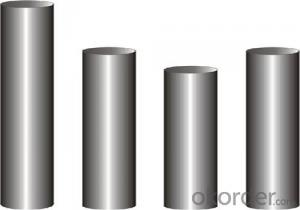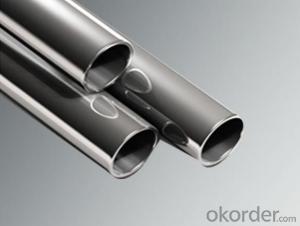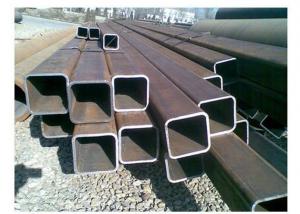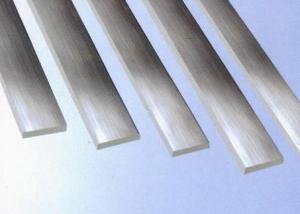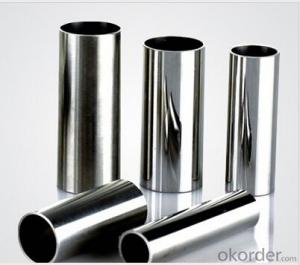Seamless Stainless Steel Tubes Steel Pipe manufacturer
- Loading Port:
- China Main Port
- Payment Terms:
- TT or LC
- Min Order Qty:
- 30 kg
- Supply Capability:
- 12000 kg/month
OKorder Service Pledge
OKorder Financial Service
You Might Also Like
1、Structure of Seamless Pipe ASTM A106/53:
Seamless pipe is formed by drawing a solid billet over a piercing rod to create the hollow shell. As the manufacturing process does not include any welding, seamless pipes are perceived to be stronger and more reliable. Historically seamless pipe was regarded as withstanding pressure better than other types, and was often more easily available than welded pipe.
Application
carbon seamless steel pipes are widely used in gas, water and oil, transpotation;constructions;Bridge,highway,windows of model steel door; building materials;fences;heating facilities Fluid Pipe;conduit pipe,scaffolding pipe.etc.
Payment Terms: L/C D/A D/P T/T
Packing and shipment
Packaged in bundles,as per customers' requirements, it can also bepackagesd as beveled ends, typed marking, black painting, plastic caps protection,woven bags packing
For 20" container the max length is 5.8m; For 40" container the max length is 12m. other options are available based on customer requests. Please discuss when placing orders.
2、Main Features of the Seamless Pipe ASTM A106/53:
• High manufacturing accuracy
• High strength
• Small inertia resistance
• Strong heat dissipation ability
• Good visual effect
• Reasonable price
3、Seamless Pipe ASTM A106/53 Specification:
Standard | GB, DIN, ASTM ASTM A106-2006, ASTM A53-2007 |
Grade | 10#-45#, 16Mn 10#, 20#, 45#, 16Mn |
Thickness | 8 - 33 mm |
Section Shape | Round |
Outer Diameter | 133 - 219 mm |
Place of Origin | Shandong, China (Mainland) |
Secondary Or Not | Non-secondary |
Application | Hydraulic Pipe |
Technique | Cold Drawn |
Certification | API |
Surface Treatment | factory state or painted black |
Special Pipe | API Pipe |
Alloy Or Not | Non-alloy |
Length | 5-12M |
Outer Diameter | 21.3-610mm |
Grade | 20#, 45#, Q345, API J55, API K55, API L80, API N80, API P110, A53B |
Standard | ASME, ASTM |
1) Material:20#(ASTM A 106/A53 GRB.API5LGRB,GB),45#,16Mn,10#.
2) Specification range:OD:21.3-610mm,WT:6-70mm,length:6-12m or according to the requirement of clients.
3) Excutive standards:GB,ASME API5L.ASTM A 106/A53,Despite of the above standards,we can also supply seamless steel pipe with standard of DIN,JIS,and so on,and also develop new products according to the requirements of our clients!
4) Surface:black lacquered,varnish coating or galvanized.
5) Ends:Beveled or square cut,plastic capped,painted.
6) Packing:bundles wrapped with strong steel strip,seaworthy packing.
4、Packaging & Delivery
Packaging Details: | seaworthy package,bundles wrapped with strong steel strip |
Delivery Detail: | 15-30days after received 30%TT |
5、FAQ of Seamless Pipe ASTM A106/53:
①How is the quality of your products?
Our products are manufactured strictly according to national and internaional standard, and we take a test
on every pipe before delivered out. If you want see our quality certifications and all kinds of testing report, please just ask us for it.
Guaranteed: If products’ quality don’t accord to discription as we give or the promise before you place order, we promise 100% refund.
②How about price?
Yes, we are factory and be able to give you lowest price below market one, and we have a policy that “ for saving time and absolutely honest business attitude, we quote as lowest as possible for any customer, and discount can be given according to quantity”,if you like bargain and factory price is not low enough as you think, just don’t waste your time.Please trust the quotation we would give you, it is professional one.
③Why should you chose us?
Chose happens because of quality, then price, We can give you both.Additionally, we can also offer professional products inquiry, products knowledge train(for agents), smooth goods delivery, exellent customer solution proposals.Our service formula: good quality+good price+good service=customer’s trust
SGS test is available, customer inspection before shipping is welcome, third party inspection is no problem.
6、Seamless Pipe ASTM A106/53 Images:
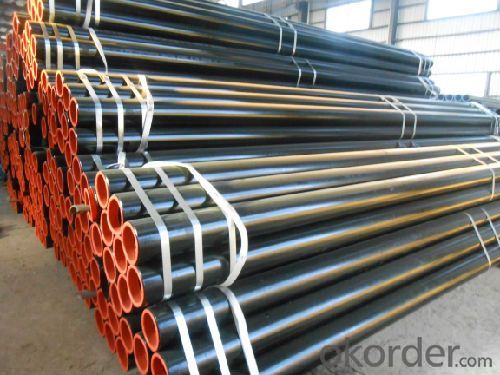
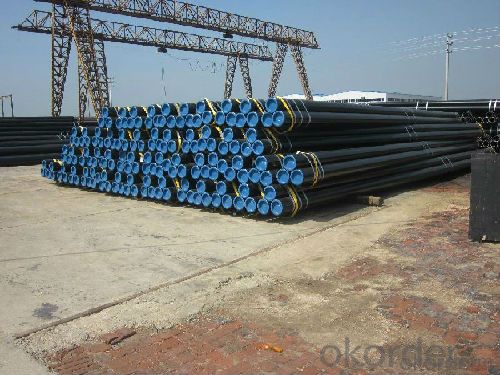
- Q: Are stainless steel pipes suitable for desalination plants?
- Yes, stainless steel pipes are highly suitable for desalination plants. Stainless steel is corrosion-resistant and has excellent durability, making it ideal for withstanding the harsh conditions and corrosive nature of the desalination process. Additionally, stainless steel pipes offer good heat transfer properties and maintain the quality of water, ensuring a reliable and efficient desalination process.
- Q: What is the difference between hot rolled and cold drawn stainless steel pipes?
- Hot rolled stainless steel pipes are made by heating a steel billet to a high temperature and then rolling it into the desired shape. This process creates a rougher surface and larger dimensions compared to cold drawn stainless steel pipes. On the other hand, cold drawn stainless steel pipes are made by pulling a stainless steel bar through a die at room temperature, resulting in a smoother surface finish and tighter tolerances. Overall, the main difference lies in the manufacturing process and the resulting surface finish and dimensional accuracy of the pipes.
- Q: What are the different types of stainless steel pipe flanges?
- Various types of stainless steel pipe flanges are available to meet specific application needs and requirements. Some commonly used types include: 1. Weld Neck Flanges: These flanges have a tapered hub and are welded to the pipe, offering exceptional strength and durability. They are suitable for high-pressure and high-temperature applications. 2. Slip-On Flanges: These flanges slide onto the pipe and are then welded in place, providing a secure connection. They are easy to install and commonly used in low-pressure and non-critical applications. 3. Socket Weld Flanges: These flanges have a socket-like end that fits over the pipe and is then welded, ensuring leak resistance. They are used for smaller pipes. 4. Threaded Flanges: These flanges can be screwed onto the pipe due to their internal threads. They are easy to install and remove, making them suitable for low-pressure applications. 5. Lap Joint Flanges: These flanges consist of a stub end and a loose backing flange, allowing for frequent dismantling or precise alignment. 6. Blind Flanges: These solid flanges have no bore and are perfect for closing off the end of a pipe. They are commonly used in piping systems that require periodic inspection or cleaning. 7. Orifice Flanges: These flanges have concentric or eccentric holes to measure fluid flow rate. They find applications in flow measurement. 8. Spectacle Blind Flanges: These flanges combine a blind flange with a spacer and are used to separate pipe system sections. They can be easily removed for maintenance or repair. It is crucial to choose the appropriate stainless steel pipe flange type based on specific application requirements, including pressure, temperature, and fluid compatibility.
- Q: What are the different types of stainless steel pipe finishes?
- There are several different types of stainless steel pipe finishes, including brushed, mirror, satin, and mill finishes. Each finish has its own unique appearance and texture, ranging from a smooth and shiny surface to a more matte or textured finish. The choice of finish depends on the desired aesthetic and functional requirements of the application.
- Q: What is the pressure rating of stainless steel pipes?
- The pressure rating of stainless steel pipes may vary based on various factors, including the grade of stainless steel, pipe wall thickness, and pipe diameter. Typically, stainless steel pipes have high pressure ratings due to the material's strength and corrosion resistance. However, consulting the relevant standards and specifications is necessary to determine the precise pressure rating for a specific stainless steel pipe. These standards (such as ASME B31.3 or ASTM A312) offer guidelines and calculations to establish the maximum allowable working pressure (MAWP) based on the mentioned factors. To ensure safety and prevent any potential failures or leaks, it is crucial to verify that the pressure rating of the stainless steel pipes is suitable for the intended application.
- Q: How do you determine the size of a stainless steel pipe?
- To determine the size of a stainless steel pipe, there are a few key factors to consider. Firstly, you need to measure the outside diameter (OD) of the pipe. This can be done using a caliper or a tape measure. Make sure to measure across the widest point of the pipe to get an accurate reading. Next, you should determine the wall thickness of the pipe. This can be measured using a caliper or a pipe gauge. The wall thickness is crucial in determining the strength and durability of the pipe. Once you have the OD and wall thickness measurements, you can proceed to calculate the nominal pipe size (NPS) or the trade size of the stainless steel pipe. This is typically denoted in inches and represents the inner diameter (ID) of the pipe. The NPS can be determined using industry standards or pipe size charts available online. It is important to note that stainless steel pipes are commonly available in a variety of schedules, which indicate the wall thickness. These schedules range from Schedule 5S (the thinnest) to Schedule XXS (the thickest). The schedule of the pipe should be considered while determining the size, as it affects the pipe's pressure rating and suitability for specific applications. In summary, determining the size of a stainless steel pipe involves measuring the outside diameter, determining the wall thickness, and calculating the nominal pipe size based on industry standards or pipe size charts.
- Q: Can stainless steel pipes be insulated with polyethylene?
- Indeed, the insulation of stainless steel pipes can indeed be achieved by utilizing polyethylene. This particular material is widely employed in pipe insulation owing to its remarkable thermal qualities and exceptional resistance to moisture. By effectively insulating the pipes, polyethylene successfully hinders any undesirable heat transfer, a crucial factor in applications demanding temperature regulation. Furthermore, its lightweight nature, flexibility, and straightforward installation process render polyethylene an ideal selection for the insulation of stainless steel pipes. Nevertheless, it is imperative to ascertain the compatibility of the polyethylene insulation with the specific type of stainless steel employed, in order to prevent any potential chemical reactions or corrosion.
- Q: What is the thermal conductivity of stainless steel pipes?
- Depending on the specific grade and composition of stainless steel, the thermal conductivity of stainless steel pipes can vary. On average, the thermal conductivity of stainless steel ranges from 14 to 19 watts per meter Kelvin (W/mK). This indicates that stainless steel pipes exhibit relatively efficient heat conduction, facilitating the transfer of thermal energy. Consequently, stainless steel pipes are well-suited for a multitude of applications that necessitate heat transfer, including heating systems, industrial processes, and certain plumbing installations.
- Q: What is the difference between seamless and EFW stainless steel pipes?
- Seamless stainless steel pipes are manufactured through a process where a solid billet is heated and pierced to form a hollow tube without any seams or joints. On the other hand, EFW (Electric Fusion Welded) stainless steel pipes are made by welding the edges of a stainless steel plate or strip to form a tubular shape. The main difference lies in the manufacturing process, with seamless pipes having a higher strength and more uniform structure compared to EFW pipes. Seamless pipes are commonly used in industries requiring high pressure and temperature applications, while EFW pipes are suitable for general-purpose applications.
- Q: What is the corrosion resistance of stainless steel pipes?
- Stainless steel pipes have excellent corrosion resistance due to the presence of chromium in their composition, which forms a protective oxide layer on the surface. This oxide layer acts as a barrier, preventing the metal from coming into contact with corrosive materials and environments. As a result, stainless steel pipes are highly resistant to corrosion, making them suitable for various applications in industries such as oil and gas, chemical processing, and marine environments.
Send your message to us
Seamless Stainless Steel Tubes Steel Pipe manufacturer
- Loading Port:
- China Main Port
- Payment Terms:
- TT or LC
- Min Order Qty:
- 30 kg
- Supply Capability:
- 12000 kg/month
OKorder Service Pledge
OKorder Financial Service
Similar products
Hot products
Hot Searches
Related keywords
